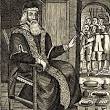The Art of Creations: Unleashing the Power of Imagination
Creations are the manifestations of human ingenuity and imagination, brought to life through skillful craftsmanship and boundless creativity. From intricate artworks to innovative technologies, creations serve as a testament to the limitless potential of the human mind.
At the heart of every creation lies a spark of inspiration—an idea that takes root in the fertile soil of imagination and blossoms into something tangible and extraordinary. Artists, inventors, designers, and visionaries alike harness this creative energy to craft works that inspire, provoke thought, and evoke emotion.
Creativity knows no bounds, transcending barriers of culture, language, and geography. It is a universal language that speaks to the essence of what it means to be human—to dream, to explore, and to push the boundaries of what is possible.
Whether it’s a painting that captures the beauty of a fleeting moment, a piece of music that stirs the soul, or a technological innovation that revolutionizes how we live our lives, creations have the power to shape our world and leave an indelible mark on history.
As we celebrate the artistry and innovation embodied in creations across all fields of human endeavor, let us remember that each work is a testament to the power of imagination and the boundless potential that resides within each one of us.
So let us continue to dream big, create boldly, and unleash the full force of our imagination upon the world. For in our creations lies the promise of a brighter future filled with wonder, beauty, and endless possibilities.
Exploring Creations: Definitions, Inspirations, and Their Impact on Society
- What is the definition of creations?
- How do people get inspired to create?
- What are some famous creations in history?
- What role does creativity play in the process of making creations?
- Can anyone become a creator, or is it a talent one is born with?
- How do different cultures perceive and value creations?
- What are some common challenges faced by creators during the creative process?
- In what ways can creations impact society and culture?
What is the definition of creations?
The definition of creations encompasses the act of bringing something new into existence through the power of imagination and skillful execution. Creations can take various forms, ranging from artistic expressions like paintings, sculptures, and music compositions to innovative inventions, designs, and technological advancements. At its core, creations embody the essence of human creativity and ingenuity, serving as tangible manifestations of ideas transformed into reality.
How do people get inspired to create?
The process of inspiration that drives individuals to create is as diverse and intricate as the creations themselves. For some, inspiration strikes like a bolt of lightning, a sudden and overwhelming surge of ideas and motivation. Others find inspiration in the world around them, drawing from nature, art, or personal experiences. Many creators cultivate their inspiration through exploration, research, and collaboration with others, constantly seeking new perspectives and insights. Ultimately, the source of creative inspiration is deeply personal and unique to each individual, a mysterious alchemy of passion, curiosity, and imagination that fuels the creative spirit.
What are some famous creations in history?
Throughout history, the world has been graced by a myriad of famous creations that have left an indelible mark on humanity. From the timeless beauty of the Mona Lisa by Leonardo da Vinci to the architectural marvel of the Great Pyramid of Giza, these iconic creations stand as testaments to human creativity and ingenuity. Innovations such as the printing press by Johannes Gutenberg and the light bulb by Thomas Edison have revolutionized how we communicate and illuminate our world. Whether in art, architecture, technology, or literature, these famous creations continue to inspire awe and admiration, shaping our understanding of the past and guiding us towards a brighter future.
What role does creativity play in the process of making creations?
Creativity serves as the lifeblood of the creation process, infusing it with innovation, originality, and ingenuity. It is the driving force that propels individuals to think beyond conventional boundaries, to envision new possibilities, and to bring their ideas to fruition in ways that inspire and captivate. Without creativity, creations would lack the spark that sets them apart, the element that imbues them with depth and meaning. Creativity fuels exploration, experimentation, and evolution, shaping the course of human progress and enriching our lives with a tapestry of diverse and captivating creations.
Can anyone become a creator, or is it a talent one is born with?
The age-old question of whether anyone can become a creator or if it is an innate talent bestowed upon a select few has long intrigued individuals exploring their creative potential. While some may argue that creativity is a gift bestowed upon certain individuals at birth, others believe that creativity is a skill that can be nurtured and developed through practice, perseverance, and a willingness to explore new ideas. Ultimately, whether one is born with creative talent or cultivates it over time, the essence of creation lies in the passion, dedication, and willingness to push the boundaries of imagination to bring something new and unique into the world.
How do different cultures perceive and value creations?
The perception and valuation of creations vary significantly across different cultures, reflecting the diverse beliefs, traditions, and values that shape societies around the world. While some cultures may place a high emphasis on artistic expression and creativity, viewing creations as a means of preserving heritage and storytelling, others may prioritize practicality and functionality in their assessment of value. Additionally, cultural norms regarding individualism versus collectivism can influence how creations are perceived, with some cultures valuing innovation and uniqueness while others prioritize tradition and conformity. Ultimately, the intricate tapestry of cultural perspectives on creations serves to enrich our understanding of the multifaceted ways in which human ingenuity is expressed and appreciated globally.
What are some common challenges faced by creators during the creative process?
Creators often encounter a myriad of challenges during the creative process, ranging from self-doubt and creative block to external pressures and time constraints. Maintaining a steady flow of inspiration, overcoming perfectionism, and navigating through moments of uncertainty are common hurdles that creators must confront. Additionally, balancing the need for originality with market demands, managing feedback and criticism, and finding the right resources to bring their vision to life can also pose significant challenges. Despite these obstacles, creators persevere with resilience and determination, ultimately transforming challenges into opportunities for growth and innovation in their creative endeavors.
In what ways can creations impact society and culture?
Creations have the remarkable ability to shape and influence society and culture in profound ways. Whether through art, technology, literature, or design, creations can spark conversations, challenge norms, and inspire change. They serve as a reflection of our values, beliefs, and aspirations, offering new perspectives and pushing boundaries. Creations have the power to unite communities, provoke thought, and foster innovation, ultimately leaving a lasting impact on the fabric of society and culture for generations to come.


